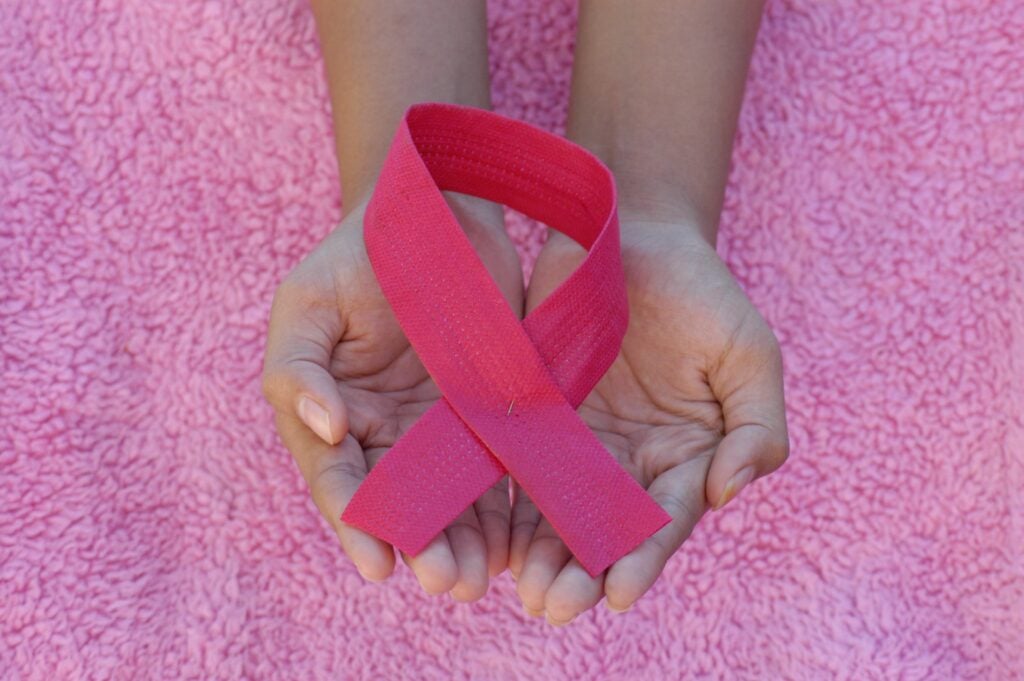
Breast cancer is the most common cancer affecting females worldwide, and it is the second leading cause of death among females. Nearly one in eight females will be diagnosed in their lifetimes.1 Globally, this equates to over 2 million new cases annually.2 Additionally, it is not only females who are affected. Around 2,740 males are expected to be diagnosed each year.1
In response to breast cancer’s prevalence, there has been a worldwide effort to spread awareness about this disease in order to increase research regarding its prevention, detection, and treatment. October is nationally and internationally recognized as Breast Cancer Awareness Month and is used as a time to educate the public and raise funds to combat the disease through research.3
History
Breast cancer has affected both females and males throughout history. However, the emphasis on breast cancer awareness is fairly new. Until the twentieth century in America, cancer was viewed as completely incurable and often even untreatable.4 Even saying the word “cancer” was stigmatized in society. Because there was little education promoting early detection and prevention techniques, it was much more common for those affected to be diagnosed at a later stage and subsequently die from the disease.
In 1913, what is now called the American Cancer Society (ACS) was formed.4 Its goal was to remove the stigma associated with talking and learning about cancer and to promote detection awareness. In order to accomplish this, the ACS began publishing articles and a monthly bulletin that provided information about cancer that was not generally known at the time.5 Beyond this, members of the ACS reached out to doctors and other medical personnel who could help spread awareness. This was the beginning of large-scale breast cancer awareness in the United States.
In 1985, October was designated as National Breast Cancer Awareness Month (NBCAM) through a partnership between the ACS and the pharmaceutical division of what is now AstraZeneca, which manufactures drugs to fight breast cancer.6 The original purpose of NBCAM was to educate the public regarding the effectiveness of mammograms in detecting breast cancer. Since then, many other organizations geared towards funding breast cancer research have become involved in the mission of this commemorative month, including the Susan G. Komen foundation, which is credited as the world’s largest anti-breast cancer organization.
Breast Cancer Awareness Today

Today, breast cancer awareness is both a national and international effort. There is a plethora of events and activities that take place all over the world to educate, to raise money, to celebrate survivors of breast cancer, and to remember those who lost their lives to the disease:
- Race for the Cure was started through Susan G. Komen and is the world’s largest fundraising event to combat breast cancer. The event includes a five-kilometer run, as well various booths and activities that take place before and after said run. There are many locations and dates of this event throughout the United States and other countries.7
- 3-Day for the Cure is another creation of the Susan G. Komen foundation in which participants complete a 60-mile walk in the span of three days in order to raise money to fund breast cancer research.8
- Wear it Pink Day is a product the United Kingdom’s organization Breast Cancer Now and is one of the largest fundraisers in the UK. The event takes place annually on the nineteenth of October, and it invites participants to register on its website, wear pink on the date, and raise money that will fund breast cancer research. Since its inception, participants have raised roughly 31.5 million pounds.9
These are only a few of the many events put on each year to combat breast cancer. Besides foundations that were specifically created to fight the disease and fund research, other organizations also play a part in educating the public. For example, major sports organizations such as the National Football League promote breast cancer awareness by wearing the color pink for games during the month of October. Individuals can help show support by getting involved in local events, charities, and organizations geared toward breast cancer awareness, or even by simply wearing the iconic pink ribbon during the month of October.
Concluding Remarks
It is difficult to know the exact impact that breast cancer awareness has had on the incidence and mortality rates of the disease. However, statistics show that the overall mortality rates in the United States from breast cancer dropped approximately 39 percent from 1989 and 2015. 10 Some attribute this to mammography technology and improvements in treatment, much of which are made possible by foundations whose goals are to spread awareness and find a cure through research.
References
- “Breast Cancer Facts.”National Breast Cancer Foundation, Inc. 2016
- “U.S. Breast Cancer Statistics.” Breastcancer.org.16 October 2018.
- “National Breast Cancer Awareness Month.” AstraZeneca. 2018.
- Osuch, Janet R. et al. “A Historical Perspective on Breast Cancer Activism in the United States: From Education and Support to Partnership in Scientific Research.” Journal of Women’s Health. 2012.
- “Our History.” American Cancer Society. 13 July 2018.
- “A Brief History of Breast Cancer Awareness Month.”Breast Cancer Consortium. 4 October 2017.
- “Find a Race Near You.” Susan G. Komen Race for the Cure.
- “Susan G. Komen 3-Day.” Susan G. Komen.
- “Breast Cancer Now’s wear it pink day” Breast Cancer Now.
- “Breast Cancer Statistics, 2017.” American Cancer Society. 2017.
Last Updated: 22 October 2018.
